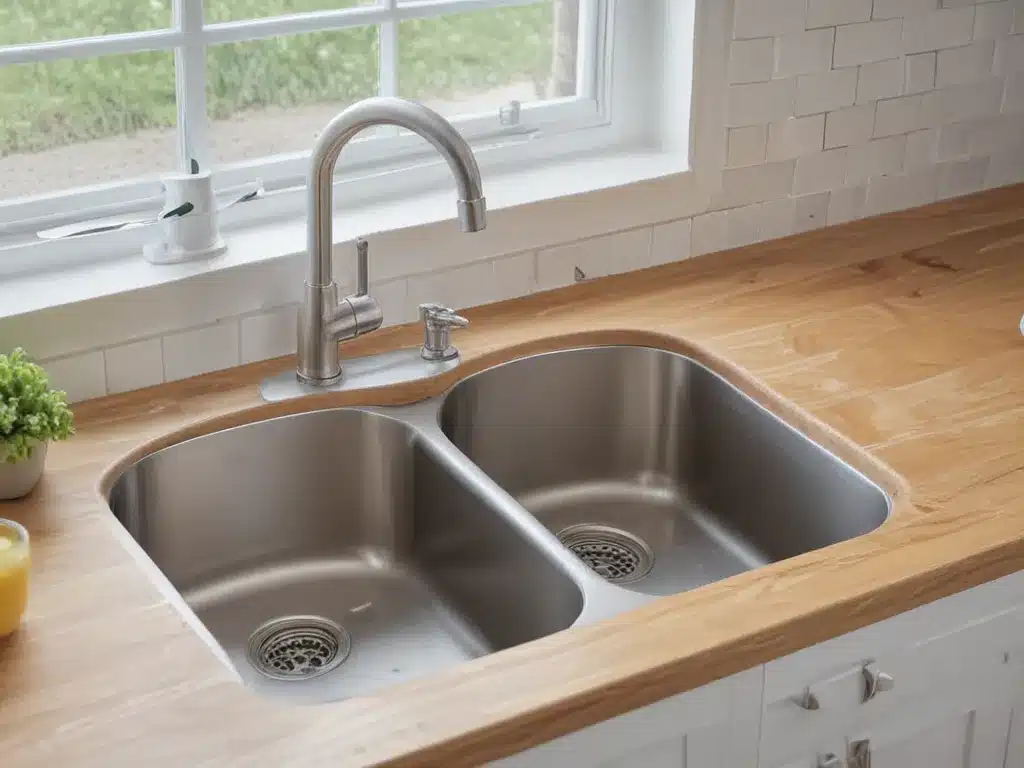Keeping your kitchen sink clean and disinfected is an important part of maintaining a hygienic home. A contaminated sink can harbor harmful bacteria that can lead to foodborne illnesses. Here is a comprehensive guide on how I sanitize and disinfect my kitchen sink.
Why Disinfecting Your Sink is Important
The kitchen sink sees a lot of action daily. Raw meats, vegetables, grease and other contaminants all get washed down the sink. Bacteria like Salmonella, Listeria, E. coli and norovirus can survive in the moist environment. When not removed, these pathogens can be transferred to dishes, utensils or hands, causing food poisoning when ingested.
Proper cleaning and disinfecting kills these germs and prevents them from spreading. For a healthy kitchen, I make sure to thoroughly scrub and disinfect my sink at least once a week. I also disinfect it after preparing raw meat or eggs.
Supplies Needed
Disinfecting the sink requires just a few common household items:
- Dish soap
- Sponge or scrub brush
- Disinfectant – Bleach or another EPA-approved disinfectant
- Clean towels
- Protective gloves
I make sure to use a sturdy brush or sponge that can reach the crevices and corners of the sink. For really stubborn grime, a pumice stone may be needed.
Step-by-Step Process
Pre-cleaning
Before disinfecting, I make sure to thoroughly clean the sink to remove any visible dirt and grime. Here are the steps I follow:
-
Remove everything from the sink such as dishes, drain stoppers, etc.
-
Rinse away any leftover debris using hot water.
-
Apply dish soap and scrub all surfaces with a sponge or brush. I use a toothbrush to scrub the faucet nozzle and drain corners.
-
Rinse away the soap residue.
This pre-clean helps remove any grime that could decrease the effectiveness of disinfectants.
Disinfecting
For disinfecting, chlorine bleach is my go-to. Other options like hydrogen peroxide, vinegar or rubbing alcohol can also be used.
Here is how I disinfect with bleach:
-
Check that the bleach contains 5-6% sodium hypochlorite as the active ingredient.
-
Dilute 1 tablespoon of bleach in 1 gallon of water. I use cool water as hot water inactivates bleach.
-
Pour the diluted bleach solution over all sink surfaces. Using gloves, I use a sponge to spread it into every nook and cranny.
-
Let the bleach solution sit for at least 5 minutes before rinsing. This contact time allows thorough disinfection.
I take care not to mix bleach with other cleaners due to potentially toxic fumes. The sink is kept empty during the contact time.
Post-disinfection
After the bleach solution sits, I do a final rinse and wipe down:
- Rinse away bleach thoroughly with hot water.
- Wipe the sink dry with a clean towel to prevent mineral deposits.
- Let the sink air dry completely before use.
I also disinfect the sponge and wash my hands after the process.
Tips for Ongoing Maintenance
To keep my sink clean long-term, I follow these tips:
- Install a sink-mounted soap dispenser for easy access when washing hands.
- Clean dishes immediately after use and avoid leaving wet sponges in the sink.
- Use a sink-side caddy to hold scrub brushes, sponges and soap.
- Routinely scrub the sink with baking soda for stain removal.
- Periodically unclog the drain to allow water to drain freely.
- Disinfect weekly and immediately after preparing raw meats.
With proper care and frequent disinfection, I keep harmful bacteria at bay and maintain a hygienic, odor-free kitchen sink. Consistent cleaning habits prevent the buildup of stubborn stains and residues over time.
When to Call a Professional
Disinfecting the sink on a regular basis is usually sufficient. However, if stains persist even after vigorous scrubbing, the help of a professional may be needed. Signs that a deeper clean is required include:
- Visible mold growth
- Foul odors coming from the drain
- Clogged drains that cause water to pool
- Staining that cannot be removed at home
For such situations, calling a plumber to thoroughly clean and disinfect the sink is recommended. They have access to stronger drain decloggers and degreasers compared to regular DIY cleaning products.
Maintaining a clean, sanitized kitchen sink does require some work. But having a hygienic place to wash dishes and hands is well worth the effort. With the right supplies and techniques, I keep my sink free of harmful bacteria and stains.







